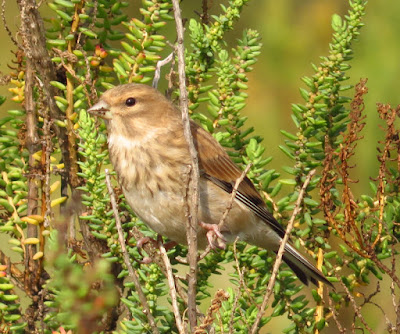Three of the common seals looked a bit out of place with this dark orange colouration. The colour seems the brightest I've seen on them here, caused by iron oxide deposits in the sediments in the estuary. (Looks like they've been tangoed!)
A young common seal pup slid down the muddy bank following the rest of the group into the water.
It swam down the Maydays creek into the main Pyefleet Channel to join the others. This seal pup has been seen several times over the last month or so in this area.
The biggest surprise of the walk along the Maydays seawall was finding three spoonbills feeding along the edge of the Pyefleet Channel. One of the birds pictured above was busy sweeping its bill from side to side whilst walking along the edge of the water. The three birds soon worked their way down channel late afternoon.
Five spoonbills have been in the Colne estuary for the last three weeks, roosting on the nearby Rat Island at high tide.
This image was as good a view there was of the Colne osprey as it sat on its usual tall pole in the Geedons over a couple of kilometres away. The white underparts can just about be made out with the dark brown wings. This tall pole has been a favourite osprey perch over the years.
This bird has now been in this estuary for almost a fortnight, while the other osprey at Abberton reservoir has been around for three weeks.
Other birds of prey included just the one marsh harrier, a juvenile pictured above as it flew along the Maydays seawall towards Langenhoe Point. Also one common buzzard on Langenhoe marsh and five kestrels in the air.
A short-eared owl hunting the middle of the Langenhoe marsh late afternoon was a nice surprise, although one has been seen a couple of times here recently.
Waders of note included at least 2 green sandpipers on the Maydays saltmarsh and another two over Langenhoe, while a common sandpiper was along Maydays creek. Forty knot, 100 grey plover and 100 black-tailed godwits fed along the mudflats and a snipe flew over calling.
Three little terns hunted along the channel and a couple of common terns seen too.
Three sedge warblers were seen in one of the bushes by the seawall, here one of the juveniles sits up on top of a bush. Also in some of the bushes were 4+ willow warblers, 2 reed buntings and 2 common whitethroats.
Feeding along the side of the fields beside the seawall were two groups of whinchats with one group of about ten birds and a second one further along on Reeveshall of five birds. Also with them were five wheatears and one stonechat. By early evening in the light drizzle the whinchats were flycatching up into the air after passing gnats.
In the skies were fifty house martins near the farm buildings along with ten swifts while earlier 100 swallows were hawking over Reeveshall. Eight yellow wagtails were also seen flying about while fifty linnets were feeding in one of the fields.
At the country park 2 or 3 Cetti's warbler showed for Steve Entwistle beside the pond early evening on Saturday. Four ruff were seen earlier in the day with one on the park pools and three on the Golfhouse saltmarsh and a wheatear by the Golfhouse, seen by Martin Cock.























































